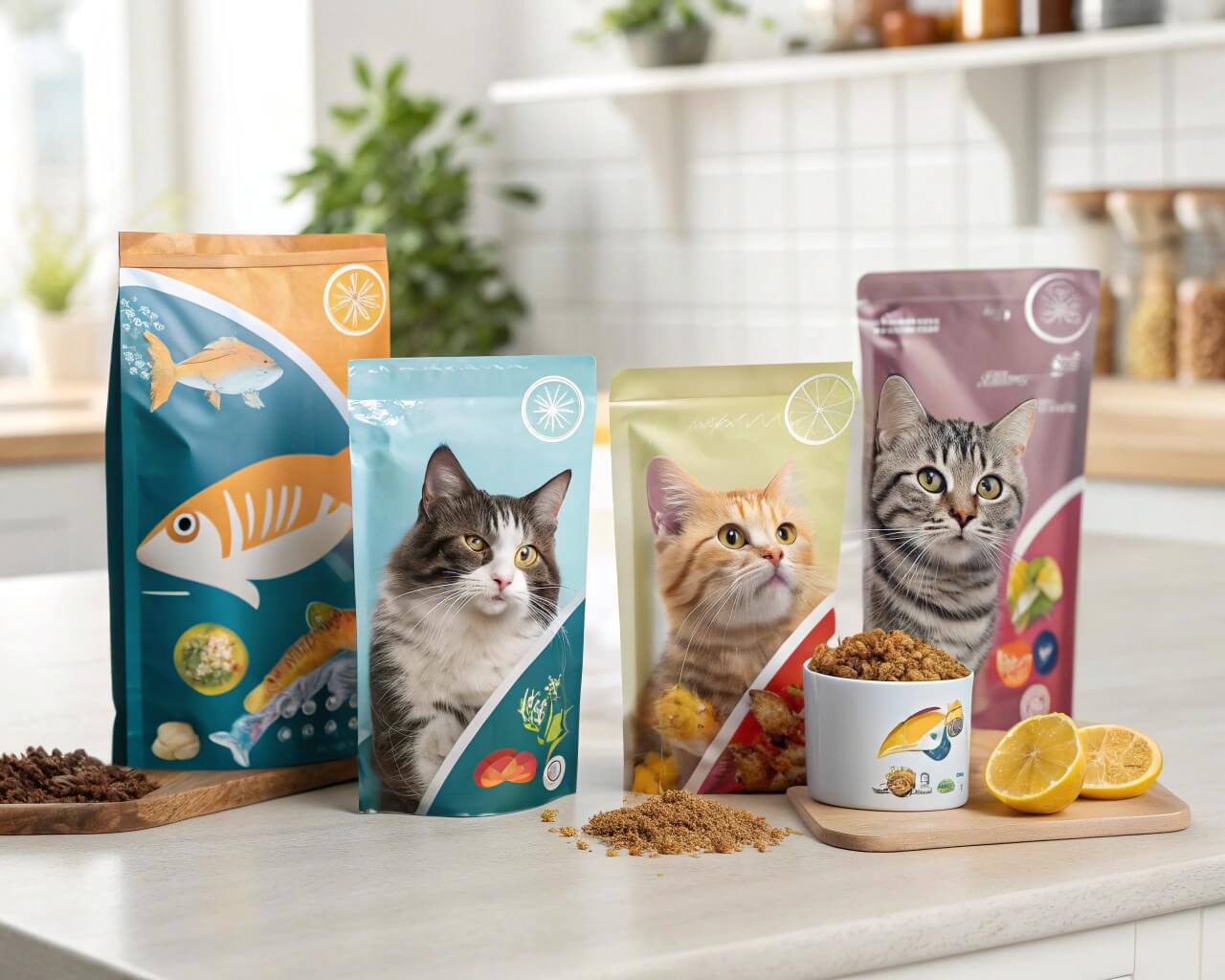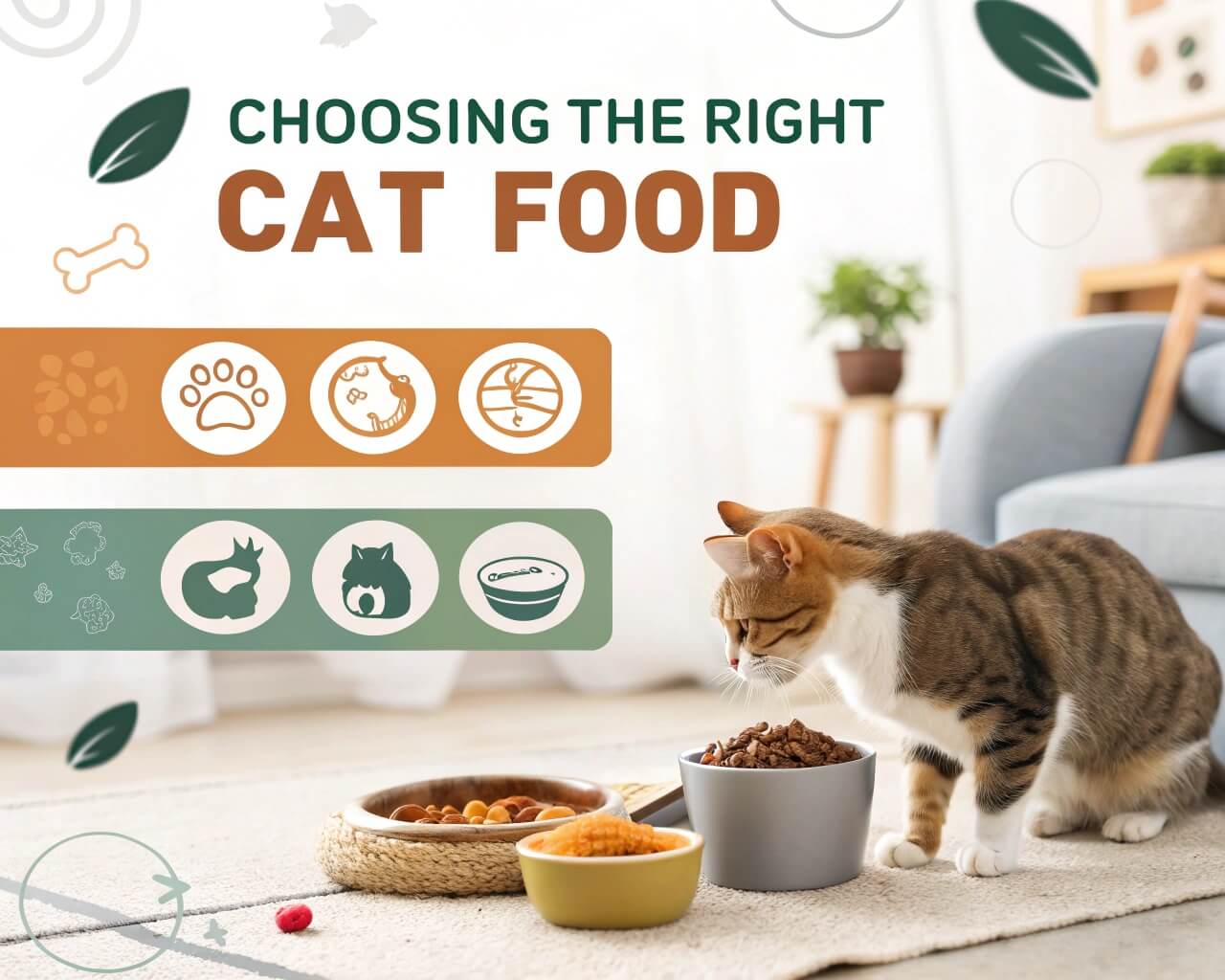Worried your cat’s expensive food goes stale or bad quickly? Poor packaging wastes money and risks your cat’s health. We help you choose packaging that protects freshness and safety.
Choosing the right cat food packaging involves checking the material for barrier properties against air and moisture, ensuring a strong seal, and considering features like resealability. These elements directly impact shelf life and nutrient preservation.

Understanding packaging is key to keeping your cat’s food safe and fresh. Let’s explore specific questions many cat owners have and how packaging plays a vital role in the answers. As manufacturers at XINYUAN, we see firsthand how packaging choices make a difference.
What does 7+ mean on cat food?
Is that "7+" label confusing? It signals food for senior cats, but poor packaging can ruin even the best specialized formula, making your cat miss vital nutrients.
The "7+" on cat food typically indicates it’s formulated for senior cats, usually those aged 7 years or older. This formulation addresses the changing nutritional needs of aging cats, not the packaging type itself.

While "7+" refers to the cat’s age and the food’s nutritional profile, the packaging is still crucial, maybe even more so for seniors. Older cats can be more sensitive to dietary changes or food that’s lost its freshness or nutritional value. Proper packaging protects the specific nutrient balance designed for them.
Why Packaging Matters for Senior Cat Food
Senior cat food often contains specific levels of protein, calories, and supplements like glucosamine or antioxidants. These components need protection from degradation.
- Oxidation: Exposure to air can degrade fats and vitamins, reducing nutritional value and potentially making the food taste bad. Good packaging needs excellent oxygen barriers.
- Moisture: Too much moisture can lead to mold growth, while too little can make kibble overly dry. Packaging must control moisture vapor transmission.
- Light: UV light can also degrade certain vitamins. Opaque or specially treated packaging materials offer protection.
At XINYUAN, we manufacture packaging using materials with tailored barrier properties. We understand that specialized foods, like senior formulas, need reliable protection to maintain their integrity from our factory floor to the cat’s bowl. We ensure the materials used are food-grade and provide the necessary protection.
| Feature Protection | Packaging Solution | Benefit for 7+ Food |
|---|---|---|
| Oxygen | High-barrier films (EVOH, Foil) | Prevents fat rancidity, vitamin loss |
| Moisture | Appropriate barrier materials | Maintains texture, prevents mold |
| Light | Opaque or metallized films | Protects light-sensitive vitamins |
| Freshness | Strong seals, resealable zippers | Keeps food fresh between servings |
Choosing a food marked "7+" is just the first step. Ensuring it comes in high-quality packaging helps guarantee your senior cat gets the full benefit of that specialized nutrition.
What is the shelf life of cat food?
Are you unsure how long that bag of cat food really lasts? Expired or poorly stored food can lose nutrients or become unsafe, potentially harming your cat’s health.
The shelf life of unopened dry cat food is typically 12-18 months, while unopened wet food lasts around 2 years. Once opened, dry food stays fresh for about 4-6 weeks, and wet food needs refrigeration and use within 5-7 days.

Shelf life isn’t just about the "best by" date; it’s heavily influenced by the packaging quality. The materials, seal integrity, and protective features built into the bag or can are designed to maximize freshness and safety until opening, and sometimes even after.
Factors Influencing Cat Food Shelf Life
Several elements determine how long cat food remains viable, and packaging is central to many of them.
- Ingredients & Preservatives: Natural preservatives might mean a shorter shelf life than artificial ones. The food formulation itself plays a role.
- Packaging Type: Cans offer a near-perfect barrier. Dry food bags rely on multi-layer films. The quality of these films matters immensely.
- Barrier Layers: At XINYUAN, we often use multiple layers in our bags. Common structures might include PET (Polyester) for strength and printability, a barrier layer like Aluminum Foil (ALU) or EVOH (Ethylene Vinyl Alcohol) for oxygen/moisture protection, and PE (Polyethylene) or CPP (Cast Polypropylene) as a food-contact safe sealant layer. The choice depends on the required shelf life and protection level.
- Seal Quality: Even the best materials fail if the seal is weak. Our automated production ensures consistent, strong heat seals to prevent leaks or air ingress.
- Storage Conditions: Post-purchase, storing food in cool, dry places away from sunlight is vital. Resealable packaging helps maintain freshness after opening.
We have extensive experience producing packaging designed for optimal shelf life. We can guide brands on the best material combinations and structures based on their specific product and target shelf life. Our equipment ensures precise manufacturing for reliable protection. We can even help with packaging suitable for export, understanding the different environmental conditions and regulations involved, saving our clients potential risk costs.
| Factor | How Packaging Addresses It | XINYUAN’s Role |
|---|---|---|
| Oxygen | High-barrier films (Foil, EVOH, Metallized PET/BOPP) | Material selection advice, quality material sourcing |
| Moisture | Materials with low MVTR (Moisture Vapor Transmission Rate) | Testing, material specification, consistent production |
| Light | Opaque materials, UV inhibitors | Offering opaque film options, printing techniques |
| Contaminants | Food-grade materials, secure seals | Strict adherence to food safety standards, seal testing |
| Post-Opening Air | Resealable zippers, sliders | Incorporating reliable resealing features |
Understanding shelf life goes beyond the date stamp; it involves appreciating the science of preservation where packaging is a critical component.
How do I choose the right cat food?
Feeling overwhelmed by all the cat food choices? Choosing involves more than just flavor; you need to consider nutrition, ingredients, and how the packaging ensures quality and safety.
Choose cat food by reading the label for AAFCO statements, guaranteed analysis, and ingredients. Also, inspect the packaging for integrity (no damage, good seal) and consider features like resealability for convenience and freshness.

While vets are the best source for nutritional advice specific to your cat, the packaging itself offers clues about the product’s quality and the manufacturer’s commitment. Think of the packaging as the first line of defense for the nutrients inside.
Packaging Clues for Choosing Cat Food
When you’re in the aisle, look beyond the brand name and pretty pictures on the bag.
- Check the Seal: Is the bag properly sealed? Any rips, tears, or punctures compromise the food inside. A faulty seal means the protective barriers are useless. Our factory emphasizes seal integrity throughout the production process.
- Look for Resealable Features: Especially for larger bags, a good zipper or slider makes storage easier and helps maintain freshness after opening. This convenience feature signals a focus on user experience and product preservation. We offer various high-quality resealing options.
- Material Feel (Subtle Clue): While hard to judge definitively, flimsy or cheap-feeling packaging might sometimes correlate with less attention to overall quality compared to sturdy, well-constructed bags. High-quality multi-layer films, like those we produce at XINYUAN, often have a substantial feel.
- Clear Information: Is the printing clear and easy to read? While this relates to printing quality (something we handle, including the printing plates – the first order includes a plate fee paid to the plate maker, but subsequent identical orders don’t), it also reflects the brand’s transparency.
As manufacturers, we work with brands to create packaging that not only protects the product but also communicates quality. We provide free typesetting services to ensure labels are clear and accurate. If a brand wants to test packaging, we offer free spot samples. Custom samples require a fee, but this is often credited back on larger orders. This commitment helps brands present their product effectively and safely.
| Packaging Aspect | What to Look For | Why It Matters for Choice |
|---|---|---|
| Seal Integrity | Intact seals, no visible damage or openings | Ensures protection from air, moisture, contaminants |
| Resealability | Working zipper or slider | Convenience, helps maintain freshness after opening |
| Material Quality | Sturdy feel, appropriate barrier properties | Durability, protection against environmental factors |
| Printing & Labeling | Clear, legible text, required info present | Transparency, ease of understanding ingredients & guarantees |
| Damage | No dents (cans), tears/punctures (bags) | Compromised packaging can lead to spoiled food |
Choosing the right cat food involves assessing nutrition and the packaging designed to protect it.
How to keep cat kibble fresh?
Does your cat’s kibble lose its crunch or smell stale before the bag is empty? Improper storage quickly degrades food quality, wasting money and making meals less appealing for your cat.
Keep cat kibble fresh by storing it in its original packaging, tightly resealed, inside an airtight container. Place it in a cool, dark, dry location away from pests and temperature fluctuations.

The original packaging is often designed with specific barriers to protect the kibble. While transferring to a separate airtight container adds another layer of protection, keeping it in the bag inside that container is usually the best practice.
Best Practices for Kibble Freshness
Maintaining kibble quality relies heavily on minimizing exposure to its enemies: air, moisture, heat, and light.
- Use the Original Bag: As we discussed at XINYUAN, bags are often multi-layered films chosen for specific barrier properties against oxygen and moisture. Discarding the bag means losing that engineered protection. If the bag has a resealable feature, use it diligently. We ensure the zippers and seals we incorporate are robust.
- Airtight Secondary Container: Place the entire original bag inside a clean, airtight container made of food-grade plastic or metal. This provides an extra barrier and protects against pests.
- Cool, Dark, Dry Location: Store the container off the floor in a pantry or cupboard. Avoid garages or sheds where temperatures fluctuate significantly. Heat accelerates fat oxidation (rancidity), moisture encourages mold, and light degrades vitamins.
- Buy Appropriate Bag Sizes: Buying the largest bag isn’t always cost-effective if you can’t use it within 4-6 weeks of opening. Smaller bags mean the kibble spends less time exposed to air after opening.
- Wash Containers Regularly: Between bags, wash and thoroughly dry the storage container to prevent rancid fat buildup or contamination.
Our factory, XINYUAN, has the capacity for large production runs, meaning we can supply brands with consistent, high-quality packaging, including bags with reliable resealable zippers. This stability ensures that brands can consistently offer packaging that helps consumers keep their cat’s kibble fresh. Our experience and large workforce allow us to handle substantial orders reliably.
| Storage Factor | Best Practice | Why It Works |
|---|---|---|
| Air | Reseal original bag + Airtight secondary container | Minimizes oxygen exposure, prevents rancidity |
| Moisture | Store in dry location, use airtight containers | Prevents mold growth, maintains texture |
| Heat | Store in cool area (e.g., pantry), avoid garages | Slows degradation of fats and vitamins |
| Light | Store in dark place (cupboard) or opaque container | Protects light-sensitive nutrients |
| Time | Use within 4-6 weeks of opening, buy appropriate size | Reduces duration of exposure after opening |
Following these storage tips, combined with choosing food in quality packaging initially, maximizes the freshness and nutritional value of your cat’s kibble.
Conclusion
Choosing the right cat food packaging and storing it correctly are crucial. They directly impact shelf life, nutrient retention, and safety, ensuring your cat gets the fresh, healthy meals they deserve.

